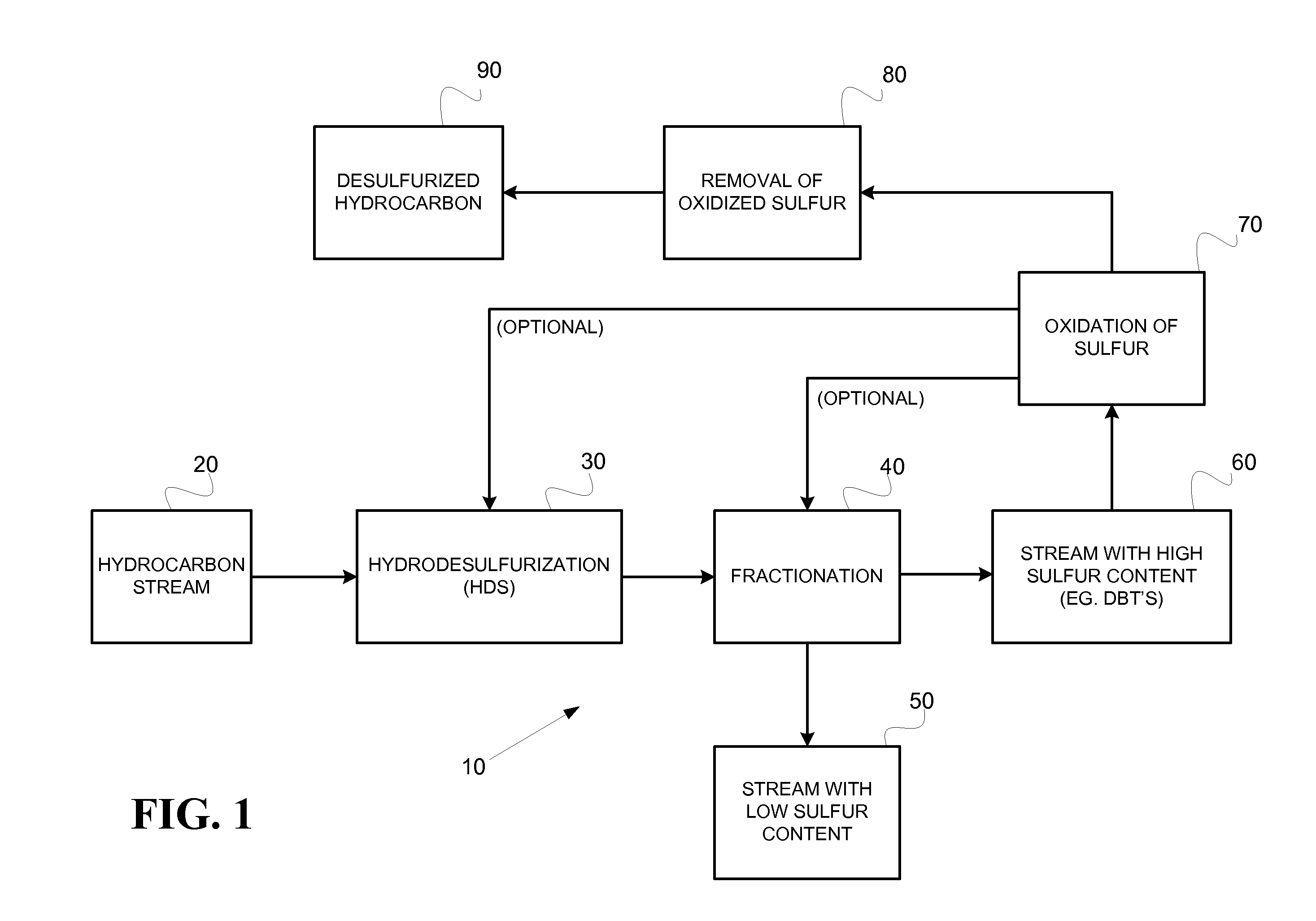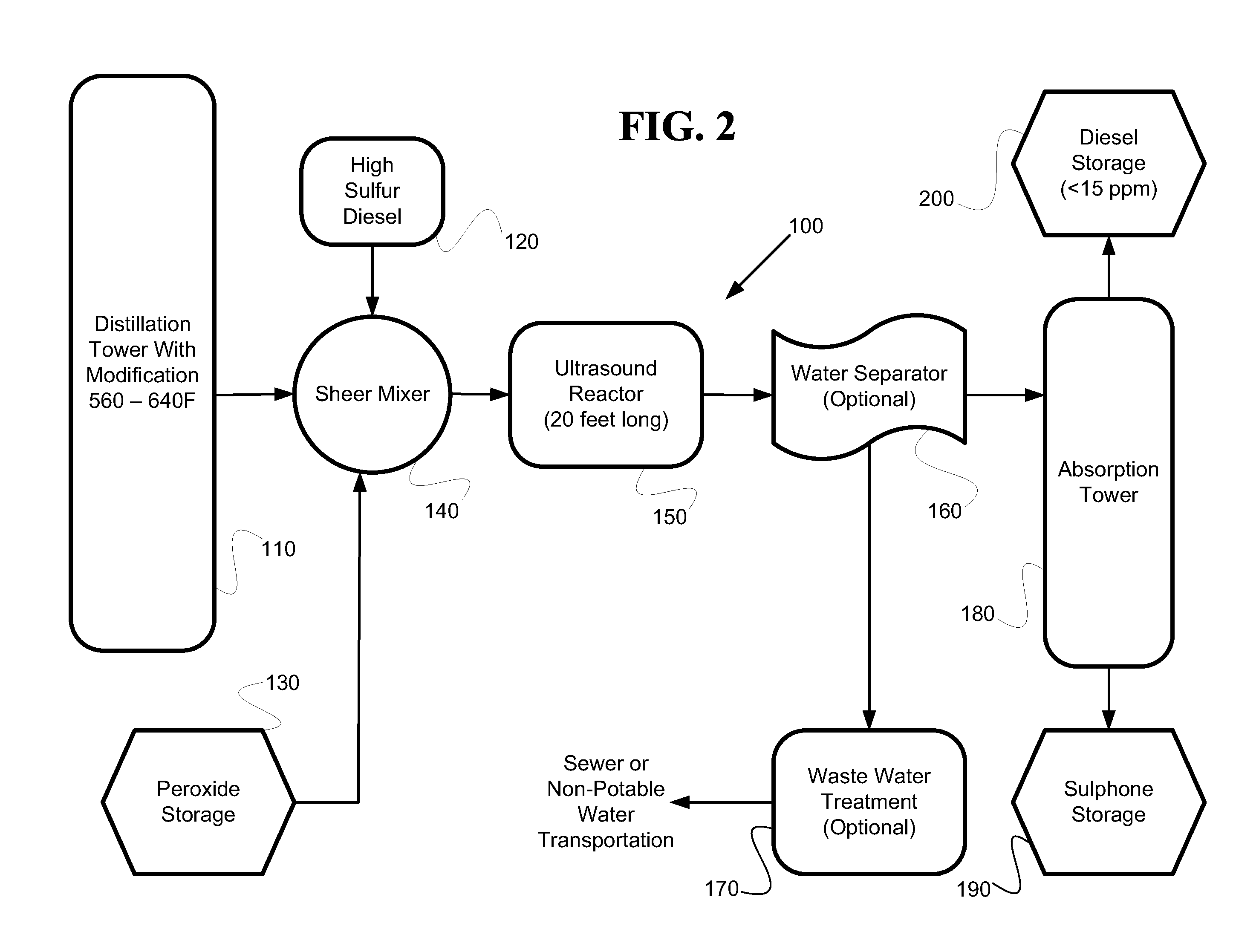Process for removing sulfur from hydrocarbon streams using hydrotreatment, fractionation and oxidation
a hydrotreatment and hydrocarbon technology, applied in the direction of hydrocarbon oil treatment products, fuels, refining to eliminate heteroatoms, etc., can solve the problems of high cost of hydrodesulfurization, large energy consumption of process, and high cost of necessary equipment, so as to achieve cost savings and facilitate implementation
- Summary
- Abstract
- Description
- Claims
- Application Information
AI Technical Summary
Benefits of technology
Problems solved by technology
Method used
Image
Examples
Embodiment Construction
[0021]The present invention is directed to methods for removing problematic organic sulfur species from a hydrocarbon stream that have been devised to work on just focusing on the specific types of difficult to remove sulfur species, benzothiophene compounds, and in particular to separating those species and treating them. The substantial advantages include lower the capital expenditures and ongoing cost without the fear or concerns of having to adopt an entirely new technology (as opposed to conventional hydrodesulfurization) to remove problem sulfur species. The invention also addresses this problem in a manner that is far more efficient and creates substantially less pollution that convention practices.
[0022]Generally, the processes herein involve providing a refined hydrocarbon stream (e.g., diesel) known to have a high sulfur content and initially subjecting the stream to hydrodesulfurization. Following the hydrodesulfurization step, the stream is fractionated to produce a sepa...
PUM
 Login to View More
Login to View More Abstract
Description
Claims
Application Information
 Login to View More
Login to View More - R&D
- Intellectual Property
- Life Sciences
- Materials
- Tech Scout
- Unparalleled Data Quality
- Higher Quality Content
- 60% Fewer Hallucinations
Browse by: Latest US Patents, China's latest patents, Technical Efficacy Thesaurus, Application Domain, Technology Topic, Popular Technical Reports.
© 2025 PatSnap. All rights reserved.Legal|Privacy policy|Modern Slavery Act Transparency Statement|Sitemap|About US| Contact US: help@patsnap.com


